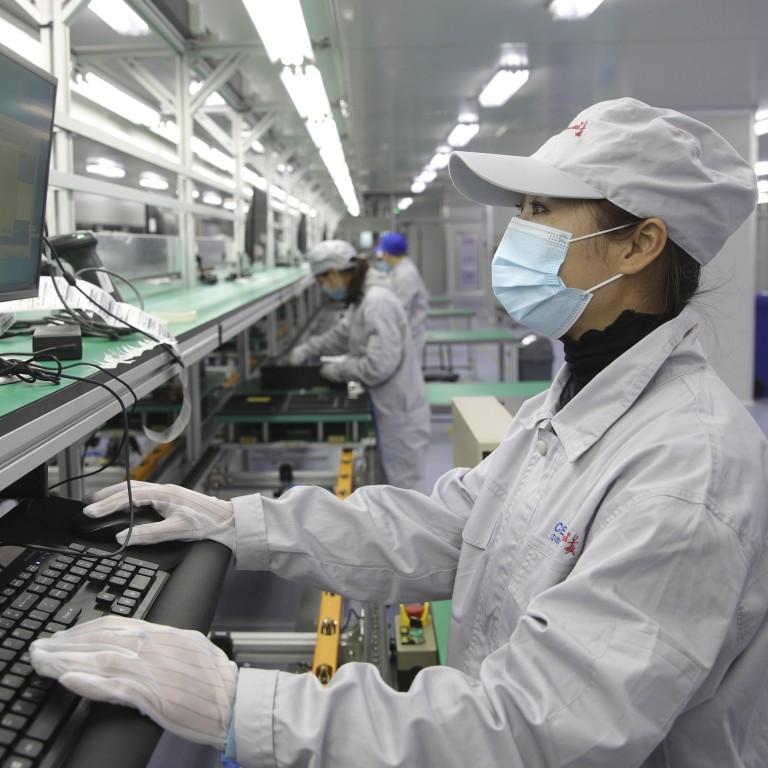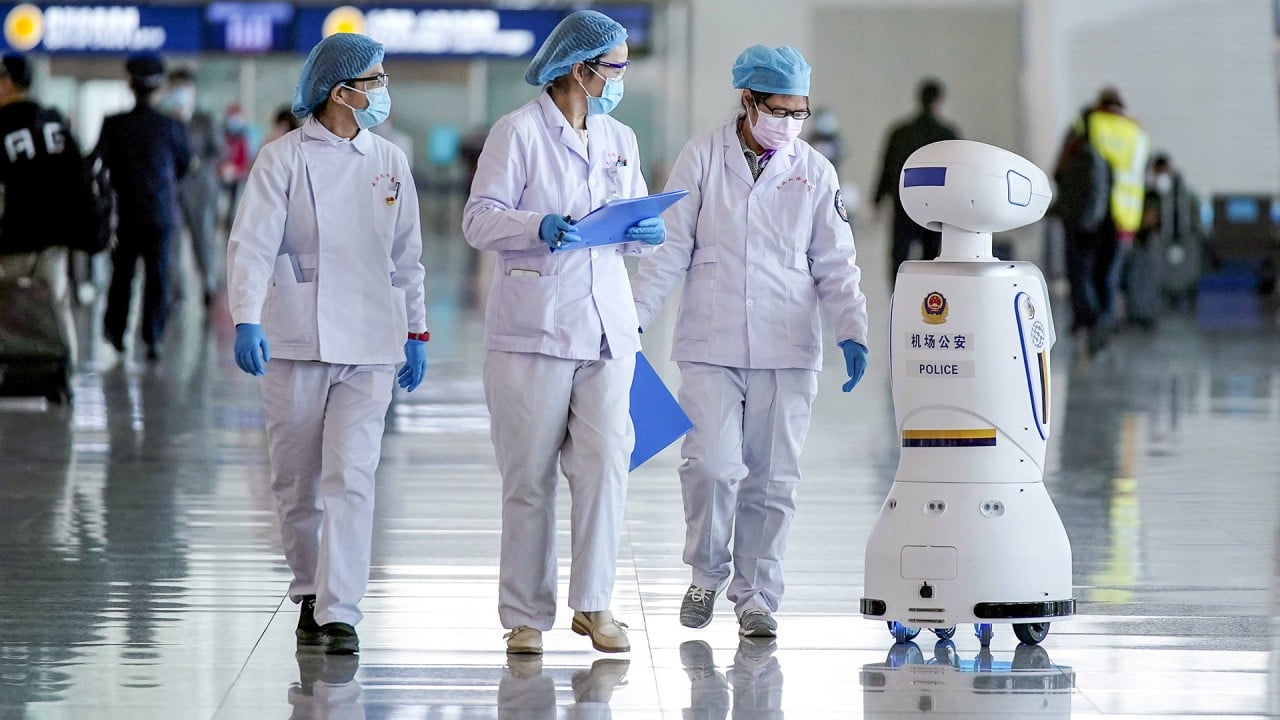
China’s R&D, tech investment inflows show deepening global economic integration despite US decoupling push
- Incoming foreign direct investment to China rose for a seventh consecutive month in October to US$12.4 billion, despite rising geopolitical tensions
- Investment in China’s hi-tech service industry led the way in the first 10 months of the year, while money flowing to the industrial sector slowed
China’s economy deepened its integration with the rest of the world in October, with foreign investment increasing amid strong spending in R&D and the tech sector, even as the Trump administration ramped up efforts to decouple the country from the United States.
FDI was hit hard in the first quarter at the height of the coronavirus outbreak in China, but it rebounded to gain 6.4 per cent in the first 10 months of the year.

03:07
China’s hi-tech industries capitalise on Covid-19 pandemic health care needs
In the January to October period, foreign investment in China’s hi-tech service industry led the way, increasing by 27.8 per cent from a year earlier, the ministry said. Research and development (R&D) and design services gained 82.1 per cent, professional technical services rose 77.9 per cent and e-commerce 44.3 per cent.
A detailed government breakdown on foreign investment by country was not available, but analysts said the level of transactions suggested US investors continued to pile into the economy despite efforts from the Trump administration to keep them out.
The bulk of FDI into China has shifted its focus to the country’s huge domestic market, especially to mergers and acquisitions (M&A), rather than previous investments in new factories and greenfield projects, analysts said.
US investment used for M&A in China between January and October rose by 69 per cent in value terms from the same period a year earlier to US$11.35 billion via 25 deals, largely due to a third quarter rebound, according to UK-based financial data firm Mergermarket.
There is actually more coupling going on between the two economies even if the [US] is trying to decouple
“There is actually more coupling going on between the two economies even if the [US] is trying to decouple,” said Louis Kuijs, head of Asia economics at Oxford Economics. “It is hard for the US government to tell its companies to stop being interested in China.”
Taimur Baig, chief economist at DBS Bank, said American investment into China had increased 26 per cent over the past five years. US investors also had nearly a trillion dollars invested in the wider Asian region, despite a rise in economic nationalism.
“Although challenged by various restrictions, the trend has not been affected through the Trump years,” Baig said. “With over US$115 billion in FDI in China, the US is far from decoupling from its superpower rival.”
The outlook for foreign investment in China has been under the spotlight in recent years, as US and European investors complain about unfair treatment for foreign companies in the mainland. State-owned firms in particular enjoy special subsidies and uncontested control in large parts of the economy, such as utilities, internet, entertainment and telecoms.
Even before the US-China trade war, global manufacturers were seeking opportunities elsewhere to circumvent rising labour costs and diversify their outsourcing in a China-centric global supply chain.
Still, foreign firms took advantage of China’s quick economic recovery from the pandemic while other countries were still mired in lockdowns. Steps from Beijing to liberalise the economy and financial system had also lured foreign capital, analysts said.
On Monday, China’s commerce ministry said it firmly opposed the US government’s latest executive order that prohibits US investors from owning shares in enterprises owned or controlled by the Chinese military. It claimed the order was a violation of market competition principles, as well as international economic and trade rules.
While FDI into China may persist, the reshuffling of the value chain will also continue as manufacturing FDI looks for other locations, especially for labour-intensive sectors
“China’s capital market has been increasingly favoured by global investors, including the United States, which reflects the confidence of international investors in China’s economic development and the recognition of China’s capital market’s deepening reform and opening up,” the ministry said.
However, FDI in the industrial sector continues to lose ground compared to other parts of the economy. Alicia Garcia Herrero, chief economist for Asia-Pacific at French investment bank Natixis, said this was in line with China’s transformation from a labour-intensive manufacturing centre to an increasingly service-oriented economy.
The share of FDI in China’s manufacturing sector declined rapidly from 55 per cent in 2006 to 26 per cent by end 2019, while consumer, information and communications technology, energy and real estate accounted for most transactions so far in 2020, Herrero said.
“In other words, while FDI into China may persist, the reshuffling of the value chain will also continue as manufacturing FDI looks for other locations, especially for labour-intensive sectors,” Herrero said.

